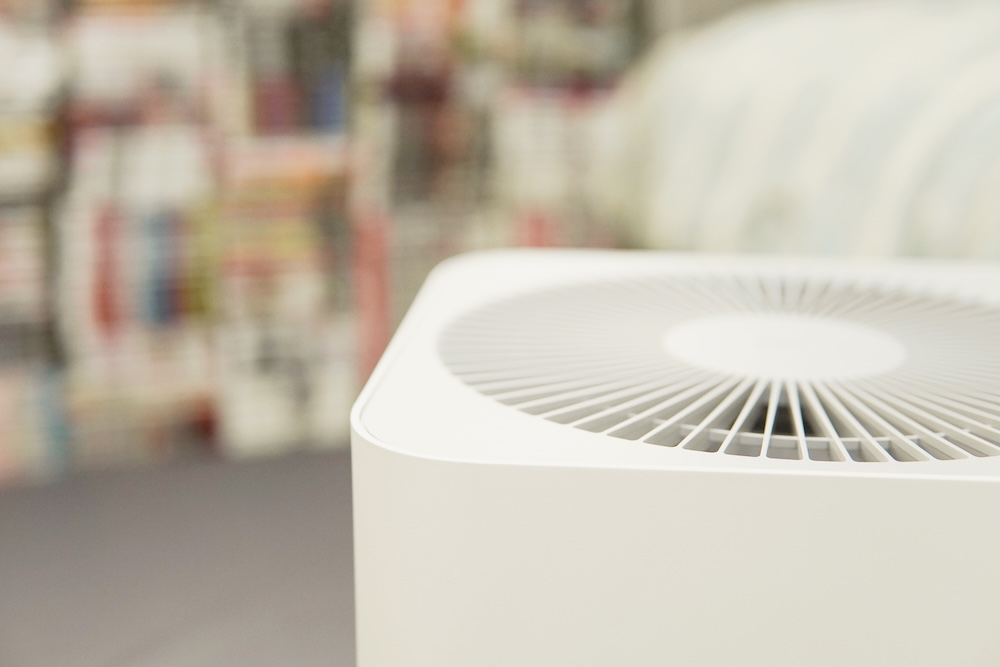During wildfire season, staying inside doesn’t always mean staying safe. Smoke can seep into your home, turning your indoor environment into a hidden hazard. With proper filtration, ventilation, and setup, you can protect your health — especially when the Air Quality Index (AQI) spikes.
How Wildfire Smoke Enters Your Home
Even with windows closed, smoke particles can infiltrate through cracks, vents, and HVAC systems. The Environmental Protection Agency confirms that outdoor wildfire smoke significantly reduces indoor air quality during fire events. These particles pose serious respiratory risks if not filtered out.
HEPA and MERV Filters: Which Ones Actually Work?
HEPA filters remove at least 99.97% of particles ≥ 0.3 µm, which includes PM2.5 from wildfire smoke. In field studies, HEPA purifiers have cut indoor PM2.5 levels by 50–80% — even under heavy smoke exposure.
Filters rated MERV 13 to 16 also perform well at filtering smoke, with some HVAC and portable systems delivering results close to HEPA standards. Studies show that mechanical filters are more stable over time than electrostatically charged ones, making them more reliable during sustained events.
DIY Clean Air Rooms: Affordable and Effective
If you cannot afford a commercial purifier, a Corsi‑Rosenthal Box (a DIY filter) offers an excellent alternative. Built with a box fan and four MERV-13 filters, it can reduce indoor PM2.5 by over 40% in real-world classroom tests — all for around $85.
EPA research confirms DIY air cleaners, when properly built, can perform comparably to retail units in reducing smoke indoors — but require careful design and regular filter replacement for safety and effectiveness.
Step-by-Step: How to Build a DIY Clean Air Room
- Choose a small room with minimal windows and doors
- Seal leaks using towels or weather stripping
- Run a HEPA purifier or a DIY filter with MERV 13+ filters
- Use continuous “Clean Air Delivery Rate (CADR)” at high fan speed
- Replace filters regularly to maintain effectiveness
To calculate the right CADR, aim for a rating that is at least two-thirds the room’s square footage.
Best Practices for Indoor Air Safety
Keep windows and doors closed during smoke events. If possible, switch HVAC systems to recirculation mode and close fresh-air intakes.
Avoid indoor air pollutants like incense, candles, smoking, or even cooking on high-heat burners. These activities release particles that further degrade indoor air quality.
After the smoke clears, clean surfaces with damp cloths and use HEPA vacuums to avoid re-suspending particles that settled on surfaces.
Who Benefits Most from Clean Air Measures?
Portable HEPA or DIY filters are especially important for:
- Children and infants
- Pregnant individuals
- People with asthma, heart disease, or chronic lung conditions
- Older adults
- Households in leaky or poorly insulated homes
Schools and low-income communities can also benefit greatly from affordable DIY filter boxes — especially where commercial systems are not readily available.
What the Research Says on Effectiveness
A study in Seattle during the 2020 wildfire season found that homes with HEPA filtration had an indoor/outdoor PM2.5 ratio of 0.43, compared to 0.82 in homes without filtration.
Other trials confirm that running HEPA air purifiers continuously during smoke events significantly reduces inhalation risks and keeps indoor exposure well below health thresholds.
Final Thoughts: Clean Air Starts at Home
Wildfire smoke doesn’t stop at your doorstep. And while we can’t control what’s burning outside, we can take steps to protect the air we breathe indoors.
Creating a clean air room — whether with a commercial purifier or a DIY setup — is one of the most impactful ways to protect yourself and your loved ones from harmful smoke exposure.
Clean air is essential. With the right tools and a little preparation, it’s also within reach.









Reader Interactions